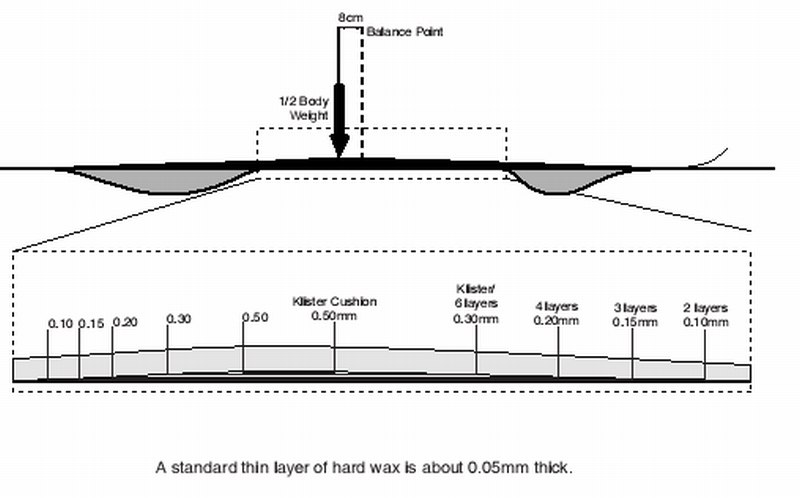I had a question regarding wax pockets. There seems to be more than one length of wax pocket - cold, warm and klister. What is the cut-off for a softer wax to shorten the cold wax pocket to a warm wax pocket? For example: if a skier is using Vauhti hard waxes, would it be at Violet / purple or at Red. Also, I would assume klister pocket is not dependent on temperature and would be the shortest length of the three pockets
Thanks,
D.M.
Short answer...
It all depends on how you apply the wax and how soft or stiff your skis are.
Long answer...
You need to know the skis quite well in order to determine how much
you can shorten the pocket without sacrificing grip. The wax itself isn't really the issue, it's how thick you put it on.
First, there is a very quantitative test you can have done to recommend the nearly exact length of the wax pocket for different types of wax - www.engineeredtuning.net/ClassicFlex.pdf. It involves characterizing the camber, the height of the ski's base above a flat surface for a specific weight of skier. Knowing the height along the ski base, and the average thickness of a layer of the type of wax you are going to apply, you can determine the length of your wax pocket. Racers often mark these lengths on the side of their skis so that they wax just to the right marks. Some ski brands put the marks on too, but they don't know your exact weight so you shouldn't really trust them too much.
Is this too technical or scientific for the general person? Maybe. Here's the key picture from the link above.

The key thing in the image above is the pyramid wax layering suggestion. A single layer of wax is 0.05mm and thus the full length of the wax pocket gets the least wax - just 2 layers, since it's closest to the snow and can drag when the ski is gliding. Where the camber is the highest, right under foot, you might use 6 or more layers of certain waxes.
So a simple rule to follow if you have skis where you are having trouble getting grip or that drag when you use warmer waxes is to try to use a pyramid system. Wax the entire pocket, then make each successive layer a little shorter than the last. Finish the process with a short layer of wax under the toe of the binding, which will give you a little better grip where it counts.
You may notice from time to time on the website we recommend wax layer combinations - carrot covered with purple. The purple will often be a short layer under the toe.
Back to shortening the pocket. The real reason for this is that warmer waxes tend to be softer and thus are often applied thicker so people shorten up the pocket to prevent the thicker layers from dragging on the snow as the ski is gliding. A better trick is to put warmer waxes on cold. By this I mean the wax itself should be cold and the skis warm. (Keep the wax outside or in your fridge/freezer.). This way you can apply thinner layers and use the entire pocket length (or almost) without causing drag problems. Just remember you will need more layers than you would usually use if the wax was warm and soft.
The last tip I have is to apply multiple thin smooth layers, rather a single thick one! Most times, this approach causes you fewer problems as you can easily add an extra layer or two if you don't have enough grip or you can cover what you already have with a colder wax should you have too much grip. And since the layers are thin the extra layers (thickness) you add won't cause the wax to drag and your skis to be slow.
Isn't classic waxing is fun?


